Related Research Articles
Capgras delusion or Capgras syndrome is a psychiatric disorder in which a person holds a delusion that a friend, spouse, parent, another close family member, or pet has been replaced by an identical impostor. It is named after Joseph Capgras (1873–1950), the French psychiatrist who first described the disorder.
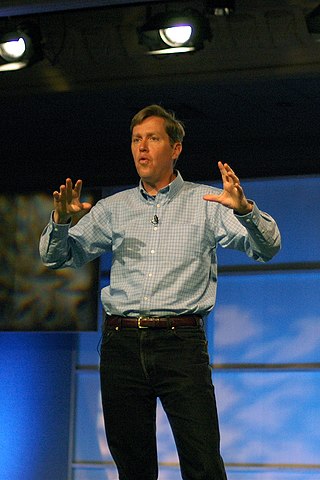
Jeffrey Hawkins is an American businessman, neuroscientist and engineer. He co-founded Palm Computing — where he co-created the PalmPilot and Treo — and Handspring.

Vilayanur Subramanian Ramachandran is an Indian-American neuroscientist. He is known for his wide-ranging experiments and theories in behavioral neurology, including the invention of the mirror box. Ramachandran is a distinguished professor in UCSD's Department of Psychology, where he is the director of the Center for Brain and Cognition.
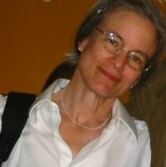
Sharon Olds is an American poet. Olds won the first San Francisco Poetry Center Award in 1980, the 1984 National Book Critics Circle Award, and the 2013 Pulitzer Prize for Poetry. She teaches creative writing at New York University and is a previous director of the Creative Writing Program at NYU.

Marilynne Summers Robinson is an American novelist and essayist. Across her writing career, Robinson has received numerous awards, including the Pulitzer Prize for Fiction in 2005, National Humanities Medal in 2012, and the 2016 Library of Congress Prize for American Fiction. In 2016, Robinson was named in Time magazine's list of 100 most influential people. Robinson began teaching at the Iowa Writers' Workshop in 1991 and retired in the spring of 2016.

Waking the Tiger: Healing Trauma is a self-help book by American therapist Peter A. Levine and Ann Frederick published in 1997. It presents a somatic experiencing approach which it says helps people who are struggling with psychological trauma. The book discusses inhibition and releasing a form of "energy".
Natalie Angier /ænˈdʒɪər/ is an American nonfiction writer and a science journalist for The New York Times. Her awards include the Pulitzer Prize for Beat Reporting in 1991 and the AAAS Westinghouse Science Journalism Award in 1992. She is also noted for her public identification as an atheist and received the Freedom from Religion Foundation's Emperor Has No Clothes Award in 2003.
William Hirstein is an American philosopher primarily interested in philosophy of mind, philosophy of language, metaphysics, cognitive science, and analytic philosophy. He is a professor of philosophy at Elmhurst University.
Paula Tallal is a Rutgers Board of Governors Professor of Neuroscience and co-director of the Center for Molecular and Behavioral Neuroscience (CMBN) at Rutgers University in Newark, New Jersey. Tallal is a participant on scientific advisory boards and government committees for both learning disabilities and developmental language disorders.

David J. Linden is an American professor of neuroscience at Johns Hopkins University in Baltimore, Maryland, and the author of The Accidental Mind: How Brain Evolution Has Given Us Love, Memory, Dreams, and God. The book The Accidental Mind is an attempt to explain the human brain to intelligent lay readers, and recently received a silver medal in the category of Science from the Independent Publisher Association. As of July 1, 2008, he has been the Editor-in-Chief of the Journal of Neurophysiology. Linden's second book, The Compass of Pleasure: How Our Brains Make Fatty Foods, Orgasm, Exercise, Marijuana, Generosity, Vodka, Learning, and Gambling Feel So Good, was released on April 14, 2011 (ISBN 978-0670022588).
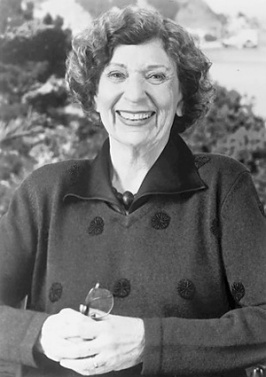
Judith Wallerstein was a psychologist and researcher who created a 25-year study on the effects of divorce on the children involved. She received a number of prominent awards and honors and wrote four best selling books. Judith Wallerstein was born on December 27, 1921, as Judith Hannah Saretsky in New York City. Her father died from cancer when she was 8 years old. Wallerstein received her bachelor's degree from Hunter College (1943), her Master's in social work from Columbia University (1946) and her Doctorate in psychology from Lund University in Sweden (1978). She died at 90 years old June 18, 2012 from an unexpected intestinal obstruction in Piedmont, California. She was married for 65 years to the academic Robert S. Wallerstein.
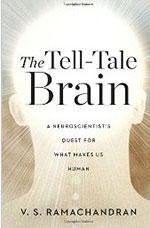
The Tell-Tale Brain: A Neuroscientist's Quest for What Makes Us Human is a 2010 nonfiction book by V. S. Ramachandran that explores the uniqueness of human nature from a neurological viewpoint.
Pam Belluck, an American journalist and author, is a health and science writer for The New York Times and author of the nonfiction book Island Practice, which is in development for a television series. Her honors include sharing a Pulitzer Prize and winning the Nellie Bly Award for Best Front Page Story.

Howard Walter Blakeslee was an American journalist. He was the Associated Press's first full-time science reporter and was awarded the Pulitzer Prize for Reporting in 1937.

Susana Martinez-Conde is a Spanish-American neuroscientist and science writer. She is a professor of ophthalmology, neurology, physiology, and pharmacology at the SUNY Downstate Medical Center, where she directs the Laboratory of Integrative Neuroscience. She directed laboratories previously at the Barrow Neurological Institute and University College London. Her research bridges perceptual, cognitive, and oculomotor neuroscience. She is best known for her studies on illusions, eye movements and perception, neurological disorders, and attentional misdirection in stage magic.
Stephen Louis Macknik is an American neuroscientist and science writer. He is a Professor of Ophthalmology, Neurology, and Physiology & Pharmacology at the State University of New York, Downstate Medical Center, where he directs the Laboratory of Translational Neuroscience. He directed laboratories previously at the Barrow Neurological Institute and University College London. He is best known for his studies on illusions, consciousness, attentional misdirection in stage magic, and cerebral blood flow.
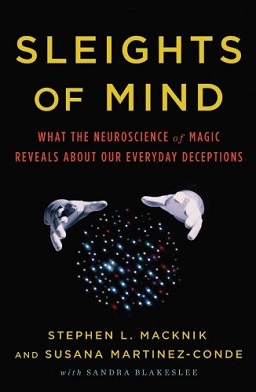
Sleights of Mind: What the Neuroscience of Magic Reveals about Our Everyday Deceptions is a 2010 popular science book, written by neuroscientists Stephen Macknik and Susana Martinez-Conde, with science writer Sandra Blakeslee. Working alongside some of the world’s greatest magicians, Macknik and Martinez-Conde studied how conjuring techniques trick the brain. Sleights of Mind considers the greater implications of magic and misdirection for clinical conditions such as autism, and for everyday life situations, including choice and trust in personal and business relationships.
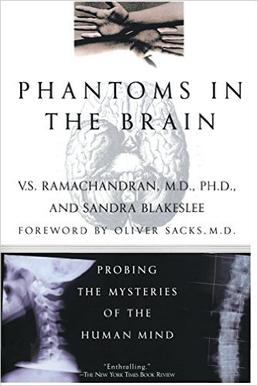
Phantoms in the Brain: Probing the Mysteries of the Human Mind is a 1998 popular science book by neuroscientist V.S. Ramachandran and New York Times science writer Sandra Blakeslee, discussing neurophysiology and neuropsychology as revealed by case studies of neurological disorders.
Anne Harrington is an American science historian and the Franklin L. Ford Professor of the History of Science at Harvard University. Her primary research area is the history of psychiatry, neuroscience, and cognitive science.

Christie Aschwanden is an American journalist and the former lead science writer at FiveThirtyEight. Her 2019 book GOOD TO GO: What the Athlete in All of Us Can Learn From the Strange Science of Recovery, was a New York Times bestseller. She was awarded an American Association for the Advancement of Science Kavli Science Journalism Award in 2016 and serves on the board of the Council for the Advancement of Science Writing.
References
- 1 2 3 4 5 6 7 8 9 Blakeslee, Sandra. "Sandra Blakeslee: Science Writer" . Retrieved 29 February 2016.
- 1 2 3 4 "Sandra Blakeslee: Journalism Fellow". Santa Fe Institute. Retrieved 29 February 2016.
- ↑ Who's who of Pulitzer Prize Winners, Elizabeth A. Brennan, Elizabeth C. Clarage, eds. (Oryx Press, 1999), "Howard Walter Blakeslee"
- ↑ Blakeslee, Sandra (2021). "The Blakeslee files: A science-writing family's treasure trove". Skeptical Inquirer. 45 (2): 11–12.
- ↑ Hawkins, Jeff. "About the Authors". On Intelligence. Retrieved 29 February 2016.
- ↑ "Sandra Blakeslee". Upaya Zen Center. Retrieved 4 March 2016.
- ↑ "Sandra Blakeslee". Macmillan Publishers. Retrieved 4 March 2016.
- 1 2 "Sandra Blakeslee". Goodreads.com. Retrieved 29 February 2016.
- ↑ "Sandra Blakeslee". Amazon.com. Retrieved 1 March 2016.